Raspberry garter in spring and autumn
Raspberry is a sprawling and branched plant. If you do not take care of it, do not cut it or tie it up in time, it will turn into wild impassable thickets, and there will be a minimum of berries on its branches.
Therefore, it is imperative to know when and in what ways to carry out a raspberry garter in spring and autumn.
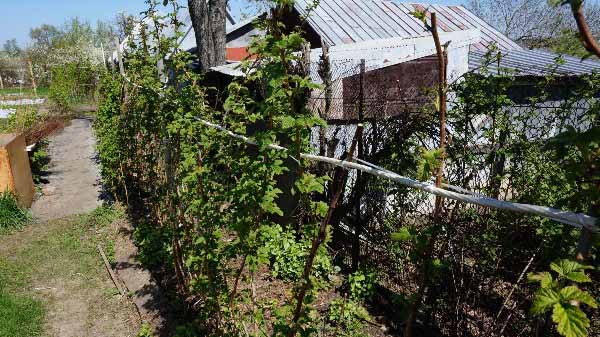
Content
Why and why tie up raspberries
Raspberries are not neat in their shoots, they like to stretch 1.5 m, and sometimes 2 m up. Long shoots begin to slope to the ground, a strong wind blows them, frequent heavy rainfall can break flexible growth.
In addition, the shrub can break on its own at the moment when the fruits begin to pour and ripen. In other words, an abundance of berries can provoke a breakdown of the most valuable part of the bush.
Even if, after cutting off a significant part of the plant, raspberries continue to strive upward, then its shoots will interfere with caring for her: loosen, feed and water efficiently... And also long lashes will interfere with the harvest.
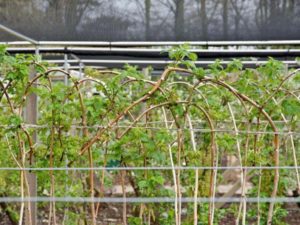
The main factor why you need to tie up raspberries is the photophilousness of the berry bush. Only in this case it turns out appetizing, ripe and tasty. If the bunches are in the shade, they tend to be sour and unsightly. And the correct raspberry garter provides access to the sun's rays to each fruiting shoot.
Therefore, a garter is a must for raspberries. The procedure is carried out in early spring, immediately after cutting off excess branches after the winter cold, in early to mid-March.
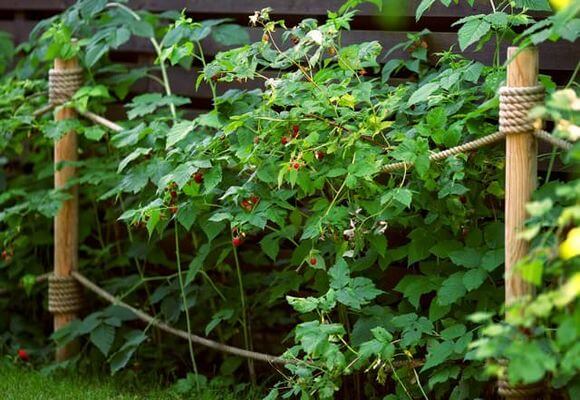
Thus, holding a raspberry garter is of great importance. If you do not follow these care measures, then the plant eventually ceases to produce large yields. And if it bears fruit, then the fruits become with an unpleasant sourness.
Features of the raspberry garter in spring and autumn
It is best to carry out the procedure for tying raspberry bushes in the spring. It stimulates various beneficial processes required for the fruit. There are the following advantages raspberry's garter spring months:
- The event helps to protect against fungal diseases and various pests hiding in unlit foliage.
- Close placement and density contribute to the shredding of young shoots and their faster withering away.
- Shoots do not break under adverse weather conditions or under the weight of a formed load.
- The fruits are pollinated faster by bees, which provokes faster ripening and the same size of each of the berries.
- Harvesting is faster and without injury to both humans and shoots.
In the fall, you also need to tie up raspberries, but for a different reason. The peculiarities of the formation of the correct arrangement of bushes in the months after fruiting increase the chances of surviving in the cold winter. Such a process prepares raspberries for winter and subzero temperatures.
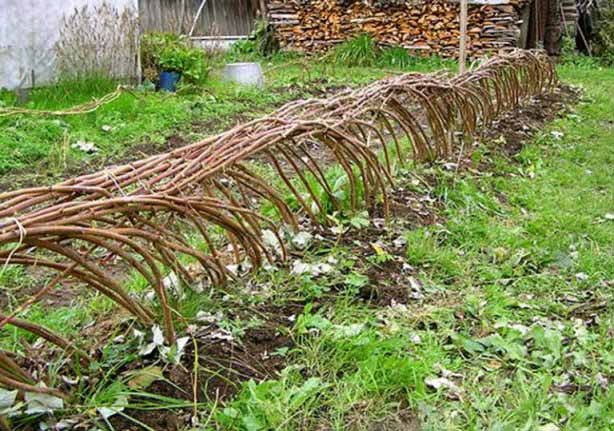
As a rule, the essence of the autumn raspberry garter boils down to the fact that for this you need to pull a wire between the raspberry bushes at a height of 20-25 cm. Before the first frost, all branches should be bent to the strengthening and tied. So the plant will not freeze, covered with a snow cover. Thus, the garter is carried out in an arched manner, with nylon threads or strong synthetic fabric that is not capable of rotting ahead of time.
Important! But it is not necessary to use the fan (arc) method of garter for the winter, you can tie up the raspberry bushes in any other way you like. But this garter in this way is best suited for further shelter of bushes, which is a must if you have severe winters.
Video: how to tie up raspberries for the winter
Attention! The procedure for bending to the ground should be started in time. If this process is delayed until the onset of the first frost, then the plant will lose its flexibility, become brittle, and under any influence may break.
Thus, the raspberry garter at certain periods is important and necessary in its own way. Therefore, it is recommended not to neglect either the autumn or spring garter.
Garter methods
There are various ways to ennoble the raspberry tree by tying it up and preparing it for active fruiting. Each of them has its own characteristics, advantages and disadvantages. There are the following raspberry garter methods:
- stake;
- fan-shaped;
- tapestry.
To choose the most optimal way to tie up the shoots of a spreading plant, you should carefully familiarize yourself with each of them.
Collecting method
This method (also called a garter to a single support) of combining raspberry shoots is the most economical and simplest. For its implementation, a wooden or iron peg is required, up to 2 meters high. It is stuck next to the shrub, it is desirable that its location was in the middle of the shoots.
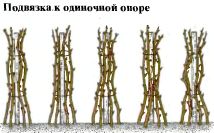
Important! No more than 6 shoots gather near it, the length of which is no more than 1.5 meters high. All shoots are tied to the upper parts of the shoots, in front of the brushes to the stake so that all the berries look directly into the sun.
This method allows you to complete all work in a minimum amount of time. Moreover, it does not require large financial costs.

But with all the positive aspects, this method of garter raspberries has its own limitations:
- Sunshine is not equally distributed for all shoots, so many berries are smaller and acidic.
- The ovaries formed inside the bush, covered with foliage for a longer period of time, do not develop and do not have the same advantages as the upper fruits left to the sun.
- With such crowding, there is a possibility of the formation of a fungal disease.
- There is a moment of possible injury to the whips during harvesting.
Thus, before starting to use this method, you should weigh all the advantages and disadvantages of its use.
Fan method
The procedure for tying raspberries using the fan method consists in placing stakes - the bush is divided into 2 equal parts, a rail or stake is driven in near each side. Selected raspberry lashes are attached to this device. The tied bushes are like a fan.
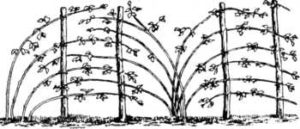
This garter method has a number of advantages:
- A separate fruiting shoot is placed in such a way that it does not interfere with the growth and development of young shoots.
- Distributing the branches using this division allows you to get the maximum amount of sunlight for all mature fruits.
- With the help of separation, the shrub completely receives the necessary amount of air, which can circulate freely not only in the upper part of the branches.
- When harvesting, you do not need to damage the shoots by looking for fruits in the thick of foliage. All berries are exposed to sunlight.
Important! Thanks to this method of garter, the gardener in any case removes a bountiful, large and identical crop. There are no problems with collecting it. Therefore, the method is considered the best, depending on the qualities of the harvested fruit.
But the disadvantage of this method is its long-term formation of the structure. You will have to work out more than one day to divide each bush into an equal number of branches. The main thing is to arrange them in the correct order so that they get even lighting.
Tapestry method
This type of raspberry garter is actively used by experienced gardeners and gardeners. Beginners do not always understand the word tapestry - these are stakes driven into the ground, between which a wire is stretched.
Attention! The design is applicable for both large perimeters and small areas.
Tying raspberries on a trellis helps to reduce the fragility of branches during strong winds. In the summer, this method of garter allows you to get enough light for excellent and high-quality fruiting.
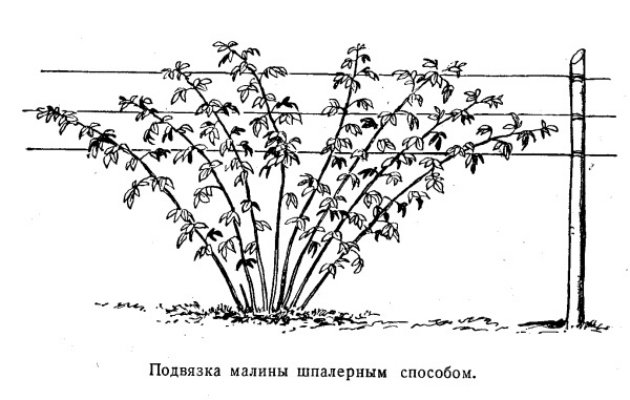
If the garter of raspberries on the trellis is done according to all the rules, then the harvest will not require much more time. Also, the location of the branches allows you to track the occurrence of parasitic insects and eliminate them in small numbers.

The main advantage of this type of garter is that the collected volume of fruits increases significantly, sometimes even up to two times.
Types of trellis garter
The raspberry trellis garter includes several different tying options.
Attention! The main rule of all options is that the branches should not rise above the upper wire. Otherwise, with the first wind, the entire structure will fall to the ground under its own weight, losing the formed and ripe crop.
There are the following types of trellis garter:
- Single is a structure of compact size. With this arrangement, the wire is pulled in 3 positions: 75 cm, 105 cm, 165 cm from ground level. Each of the shoots is tied up independently from the others.
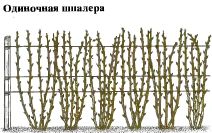
- Double (pistol) - wooden stakes 2 meters high are installed at a distance of 4 meters from each other. A beam is constructed between the pillars in the center of the structure.The wire is fixed parallel to the bottom and top of the center base. The garter procedure is performed specifically - the shoot is fixed in 2 places, and then all branches are cultivated in different directions, which are attached every 50 cm. The disadvantage of the method is the resulting problems with harvesting.
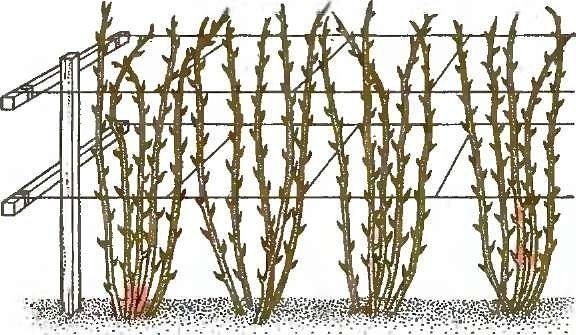
- Scandinavian - a fairly effective method, but not much different from a double design. The differences in the methods are that the wire in the latter is stretched at the lower level at a height of 1 meter, and the second - at 2 meters. The specificity of the process of fixing on the support is the arrangement of the branches in such a way that there are no garters, and the shoot is fixed on the wire like the letter "V". The advantages of this method are excellent ventilation of the tied bushes, the possibility of normal growth of young branches, subsequently replacing the old growth. You can pick berries without much effort.
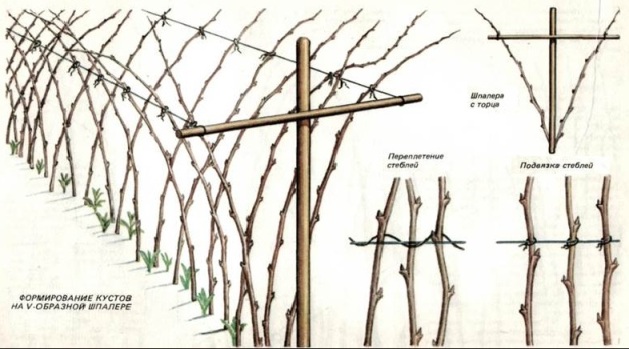
- Mobile turnstile - modern device of engineering thought. Such a device allows you to change the position of plants from vertical to horizontal, changing the angle of inclination of plants and the turnstile by 1200... The method allows all berries located at different levels to receive sufficient lighting. At the same time, the possibility of detecting pests and diseases increases several times.
Thus, the choice of different tying methods allows you to harvest the maximum possible yield from the plant. The methods allow the berries to fully withstand in sunlight, saturating them not only with sweetness, but also having achieved large sizes.
Video: do-it-yourself raspberry trellis
Growing raspberries without a garter
Some varieties of red and yellow raspberries do not require tying measures. The shrubs are distinguished by thick trunks, allowing them to grow right at a height of 1.5-1.9 meters, without bending under the slightest breath of breeze. These types of raspberries that do not require a garter include:
- Spirina is white;
- Balm;
- Ruby Bulgarian;
- Coral;
- Modest.
The peculiarity of growing is that the shoots of young plants in the first year are not pruned and not formed. But the territory is fenced off within 50-65 cm, and everything that is behind it is removed. In the second year, all the growth that has grown over the level is eliminated.
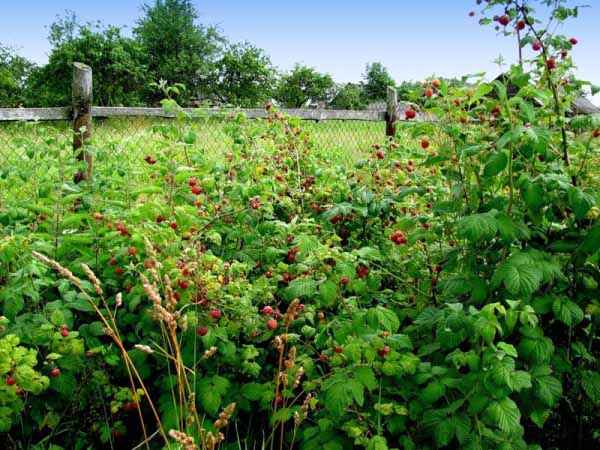
Important! The main thing is to make sure that there is no excessive density of young growth inside. She can clog old ones, preventing normal fruiting. The normal number of young shoots should be 1 m2 - no more than 15-20 pieces.
Although the varieties do not require a garter, this arrangement has a number of cons:
- It is not always possible to find new young growth, which contributes to an increase in density. As a result, the number of thin, non-viable shoots increases.
- The stems that are placed in the center of the bush are not provided with sufficient light. This affects the size and taste of the berries.
If you allow these situations to arise, it is possible to acquire diseases of any type or parasitic insects. The latter are capable of infecting the entire raspberry tree and spoil most of the crop.
Therefore, it is recommended to resort to the raspberry garter anyway. There are enough ways to carry out the procedure to increase the yield on the site and prevent the occurrence of pathogenic bacteria and pests.
Video: how to make a trellis for raspberries

